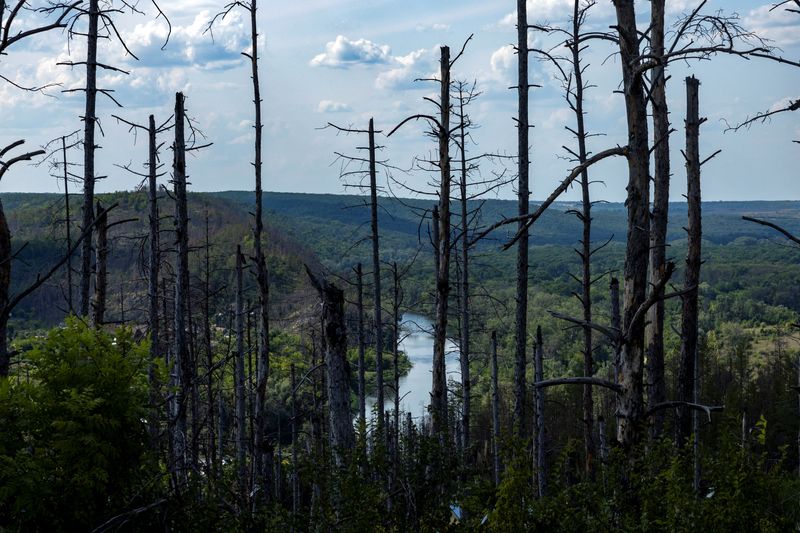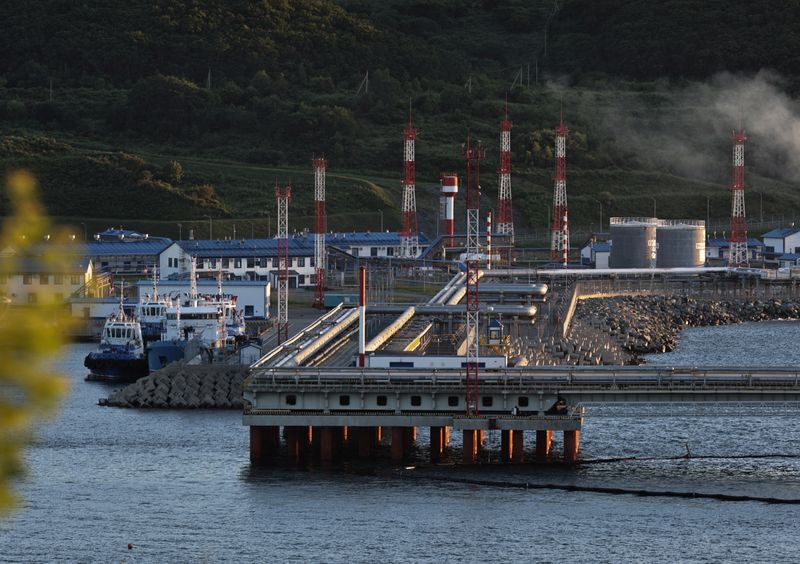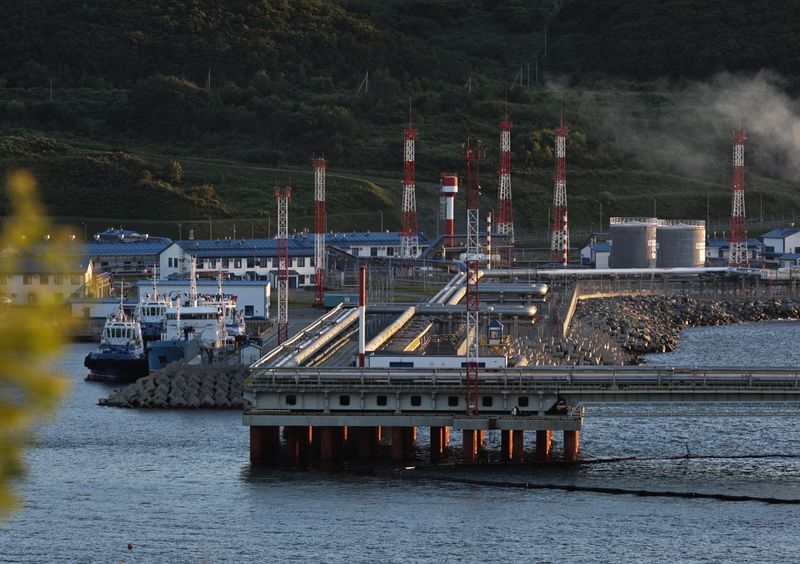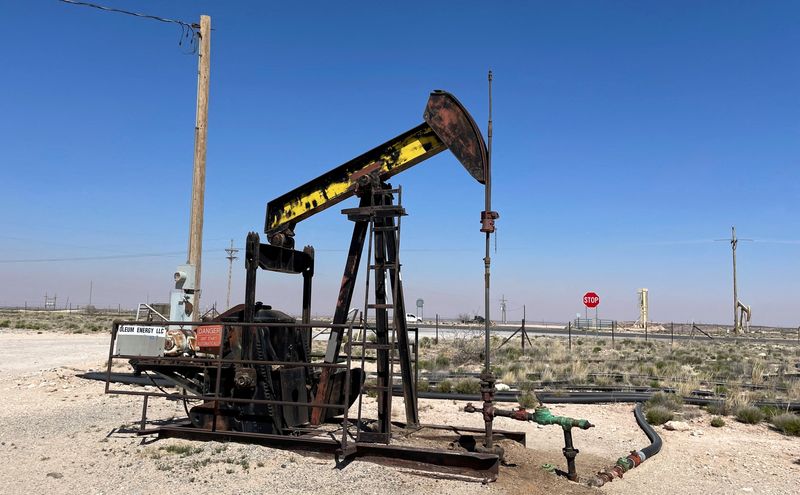
By Max Hunder
SVIATI HORY NATIONAL PARK, Ukraine (Reuters) – Serhiy Tsapok surveyed the smouldering ruins of pine trees, blackened stumps as far as the eye can see that bear witness to a scorched nation.
“They’re dead now,” the weary ranger said of the trees he’d nursed for almost two decades. The 41-year-old’s daily route through the Ukrainian forests, once a joy, has become a nightmare.
“Now when I’m driving, it’s better to just stare at the road.”
The fire he fought, caused by a blast of undetermined cause, wiped out three hectares of octogenarian pine trees at the Sviati Hory national park in eastern Ukraine, according to officials there. Four-fifths of the park’s nearly 12,000 hectares have been damaged or destroyed by fires or ordnance, they said.
It’s a drop in the ocean of the damage caused by the war, which has brutalized the landscape of Ukraine and much of its 10 million hectares, or 100,000 sq km, of forest. Both Russian and Ukrainian armies blast thousands of shells at each other every day, shredding the earth in grinding combat that echoes the trench warfare of World War One.
The conflict has innovated in destruction, too.
Two videos posted in September by a unit from Ukraine’s 108th Territorial Defence brigade showed a small drone trying to flush out Russian troops by spraying a glowing, red-hot substance onto a long line of trees and setting them alight.
Reuters spoke to nearly 20 specialists in the field, including forest rangers, ecologists, demining experts and government officials, who provided a detailed picture of the ruin wrought on Ukraine’s forests by the 31-month-old war.
Russian authorities didn’t respond to requests for comment for this article.
The director of the Sviati Hory national park, Serhiy Pryimachuk, told Reuters that Russian munitions had burned vast tracts of the area, once a rare and beloved beauty spot in a heavily industrialised region.
“What we have lost is enormous,” he said.
Tending to forests is now a perilous occupation, with mines and unexploded shells hidden in the ground posing the biggest threat.
Oleksandr Polovynko, a 39-year-old ranger, nearly lost a foot after stepping on a mine while tending the forest last year. “I crawled back to the car, and drove home with one leg,” he recalled. It took him six months to return to work.
All that remains of many forests in eastern Ukraine are fields of stripped, broken trunks. Local wildlife, including deer, boars and woodpeckers, have been badly affected by the loss of habitats, the experts said, although it is currently hard to gauge biodiversity loss in forests.
In northern Ukraine’s Chornobyl nature reserve, the pre-war population of over 100 Przewalski’s horses – a globally endangered species of wild horse – has been hit hard by the conflict, according to Oleh Lystopad, an ecologist with the ANTS advocacy group who said landmines were making it difficult to extinguish fires.
“Right now, it’s in question to what extent this species can continue to exist there,” Lystopad said.
DENSE FORESTS DECIMATED
Protecting the environment isn’t the highest priority for a country fighting to repel an invading army in a conflict that has claimed tens of thousands of lives.
The damage to forests is nonetheless part of a broader trail of environmental destruction caused by the war, which could leave a bleak natural legacy for decades to come, having poisoned earth and rivers, polluted the air and left vast tracts of the country riddled with mines, according to the experts.
The conflict has compounded destruction of Ukrainian forestland by longstanding factors such as illegal logging. The damage during the war has been caused by various factors: aerial bombardment can spark large fires, while some forests near the frontline are shelled so intensively that they’re rendered a field of stumps.
The dense pine forests common to eastern Ukraine catch alight easily and have been decimated by the conflict, said Brian Milakovsky, a U.S.-based forester who until recently lived and worked in Ukraine for eight years.
The war has torn through the habitats of some unique flora such as the chalk pine, a rare subspecies of Scots pine, according to ecologists and park officials.
Milakovsky said the environmental crisis was particularly acute in Russian-held areas – nearly a fifth of Ukraine – where occupation authorities appeared to have little capacity to extinguish forest fires. He estimated about 80% of the pine forests in the eastern region of Luhansk had been destroyed.
BOOBY TRAPS AND TRIPWIRES
About 425,000 hectares of forest across the country have been found to be contaminated by mines and unexploded ordnance, an area half the size of Cyprus, according to the environment ministry.
Authorities say they still need to inspect up to 3 million hectares of forest which are or have been occupied by Russian forces and are likely riddled with mines and ordnance. The foresters interviewed said the Russians were heavily dug in, and left booby traps and tripwires behind as they retreated.
“If we want to extinguish a fire quickly, it’s impossible because the entire territory is mined,” Ruslan Strilets, who was Ukraine’s environment minister at the time of his interview in July. “There is a risk of being killed or maimed.”
Indeed, on top of serious injuries to rangers like Polovynko, 14 forest workers have been killed by landmines, booby traps and shelling during the conflict, according to environment ministry data.
On two separate occasions in Donetsk, Reuters reporters saw rangers and fire crews look on from narrow cleared paths as fires chewed their way through the mined forest undergrowth in front of them.
Reuters watched deminers from Ukraine’s State Emergencies Service methodically sweep a dirt track through forestland in Sviati Hory over the summer. Mykyta Novikov, the 24-year-old head of the squad, said the team had cleared a strip 200 metres long and eight wide over the past two days, but on the most difficult days they might only advance 5 metres.
“We’ve had days where we destroy 50 items,” he added.
Three demining experts told Reuters that operating in forests is far more difficult than clearing open fields as most demining machines cannot navigate around trees.
“It requires inch-by-inch manual clearance,” said Adam Komorowski, a regional director at the Mines Action Group NGO.
DECADES AND BILLIONS OF DOLLARS
The specialists interviewed said the process of repairing the damage to the forests would take decades and cost billions of dollars. Some doubted whether some heavily mined areas of forest would ever be cleared, citing past examples of forests declared no-go zones after previous European wars.
The country will need “many, many years” after the war to merely gauge the damage to its forests, said Strilets, who has since been replaced as environment minister.
The current official estimate is that demining all contaminated territory, including forests and other areas such as agricultural land, would take 70 years, he told Reuters in Kyiv on July 22.
Four ecologists with expertise in Ukrainian forests said the subsequent process of regenerating damaged areas would be complex and could take decades, plus would require billions of dollars of investment.
According to a June 2024 study on the Ukraine war’s carbon emissions, conflict-related forest fires directly emitted greenhouse gases equivalent to 6.75 million tonnes of CO2, the equivalent of the annual emissions of Armenia. Ukraine has also lost the carbon capture potential of those burnt trees.
The World Bank estimated in February that the damage wrought by the war on forests and other protected natural areas including marshes and wetlands exceeded $30 billion.

That included $3.3 billion of direct damage from fighting, $26.5 billion worth of wider economic and environmental costs including pollution, and a repair bill of $2.6 billion.
Ukraine’s position is that Russia should pay for the damage it has caused. Maksym Popov, an adviser on environmental issues to Ukraine’s chief prosecutor, told Reuters Kyiv was pursuing about 40 criminal cases against Russia over the devastation to forests.
This post is originally published on INVESTING.






